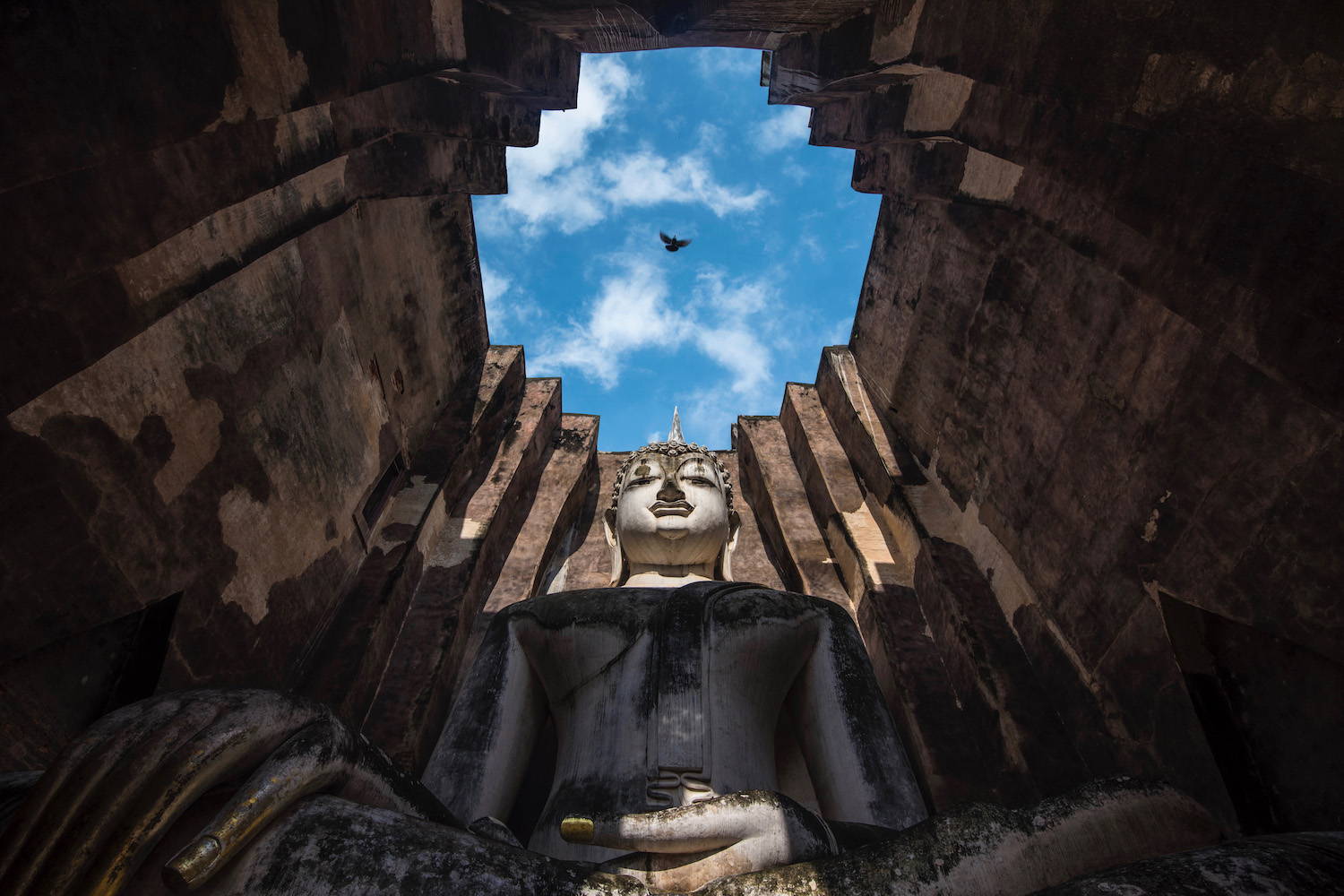I’m not sure why I was driving along a coastal cliff face to reach Bangkok’s Don Mueang Airport (which sits about 20 miles inland), 0r why I was driving in Thailand at all. Or why the waves were so violent—they eventually submerged the road, forcing me to abandon my vehicle and surrender it to the sea.
It was a dream, of course, one that had all but vanished from my memory by the time I arrived at the real Don Mueang later that morning. But as my plane pushed back from the gate, I received a strange message. Be careful of floods.
I’d forgotten that, too, by the time I landed in Phitsanulok, gateway to the “lost city” of Sukhothai. At least until the downpour started, like a tsunami falling dropwise.
The Story of Sukhothai
While it’s frustrating that no major event in the history of Sukhothai seems to connect with all the flood imagery that flooded my psyche the morning I traveled there, it’s understandable: Ancient Thai civilization flourished not because it fled rising waters, but because it used them to its advantage.
In fact, nothing about the story of Sukhothai—whose name, fittingly, translates to “Dawn of Happiness”—is particularly dramatic. The Sukhothai Kingdom flourished between the 13th-15th centuries, then gradually (and, it seems, amicably) merged with neighboring Ayutthaya, ending as a result of assimilation rather than conquest.
Sukhothai vs. Ayutthaya
That Sukhothai became part of Ayutthaya (and not the other way around) is part of what makes the former so much more enjoyable than the latter for modern visitors. That, and the fact that Sukhothai is comparably farther from Bangkok than Ayutthaya.
To be sure, Sukhothai feels deserted compared to Ayutthaya (and every other “lost city” I’ve visited in Southeast Asia), which is strange when you consider how much smaller it is—Sukhothai Historical Park occupies less than two square miles, although you can find Sukhothai-era ruins scattered across an area of about 27. I personally find the understated style and modest scale of Sukhothai to be more pleasing than that grand, gaudy Ayutthaya, although you’ll have to make that judgment for yourself.
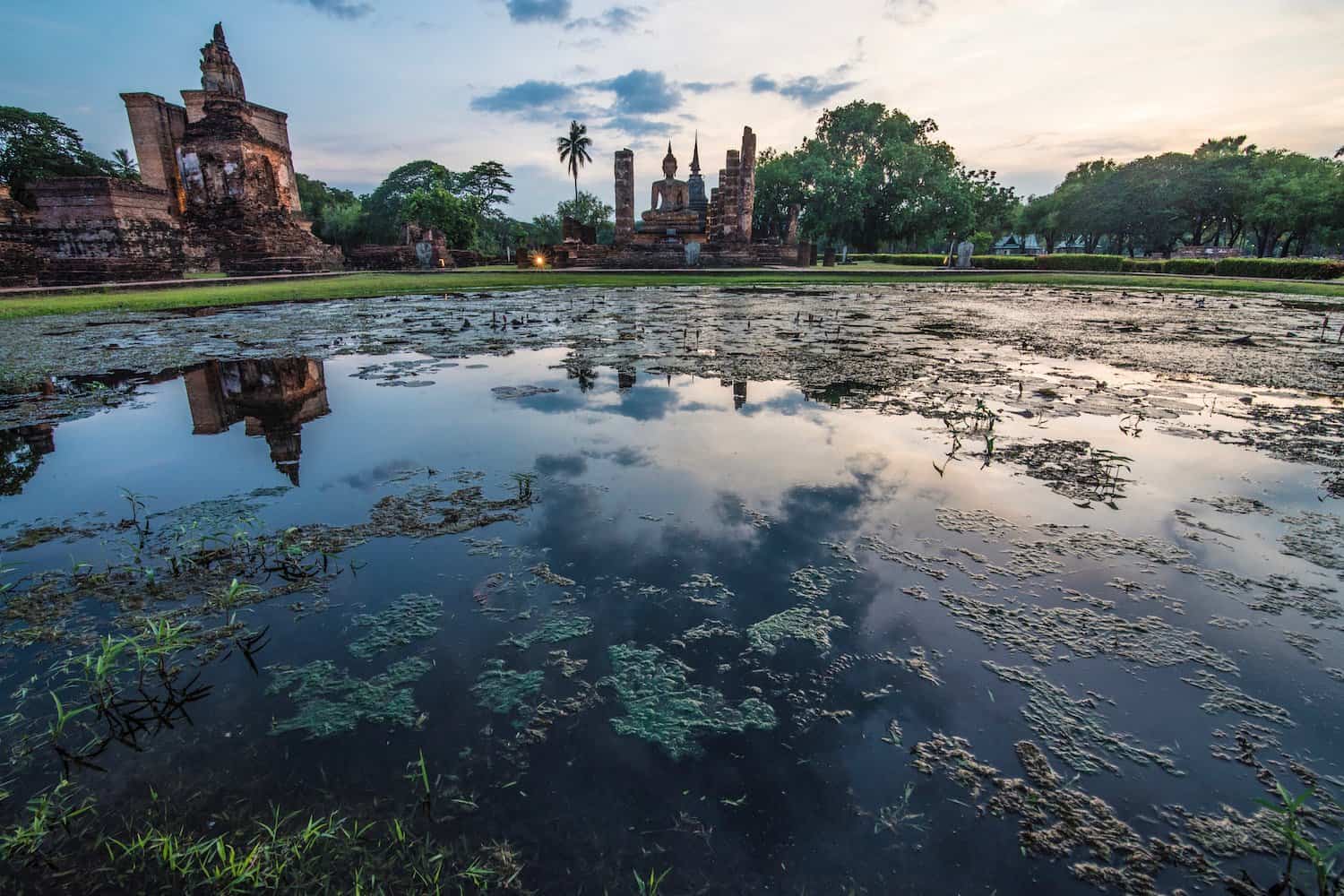

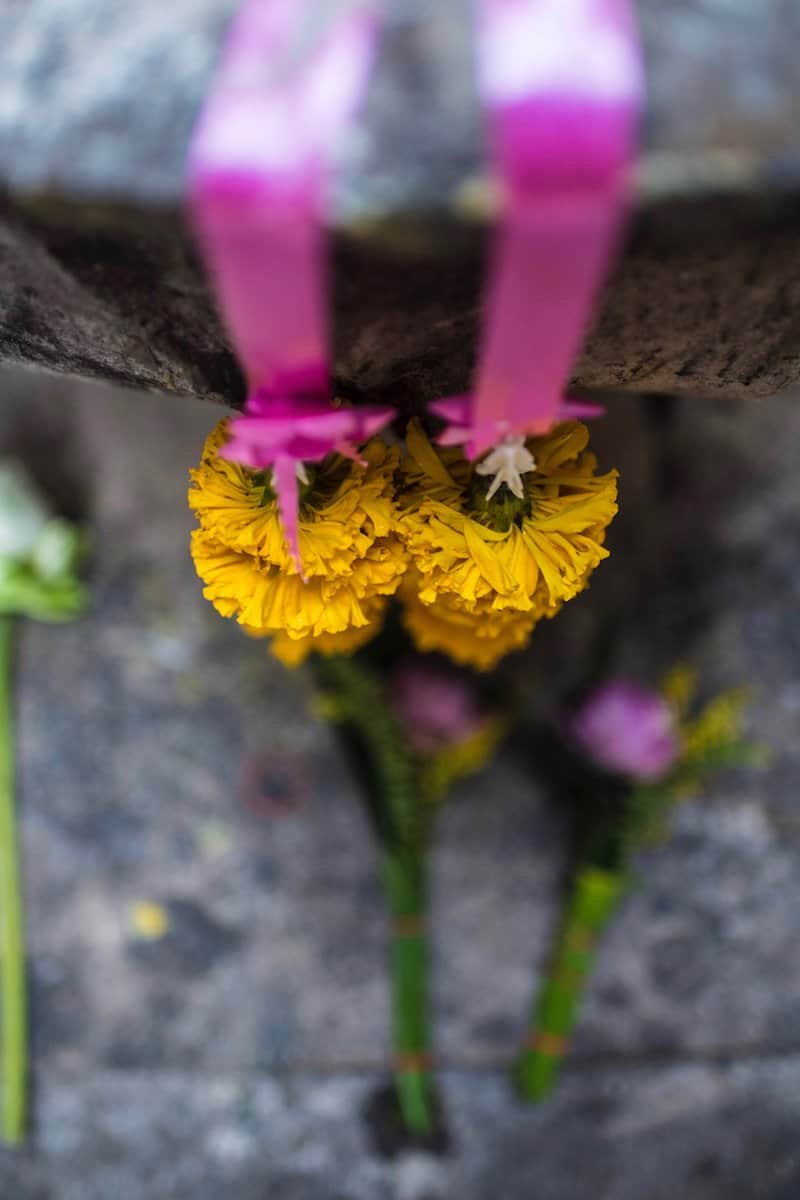
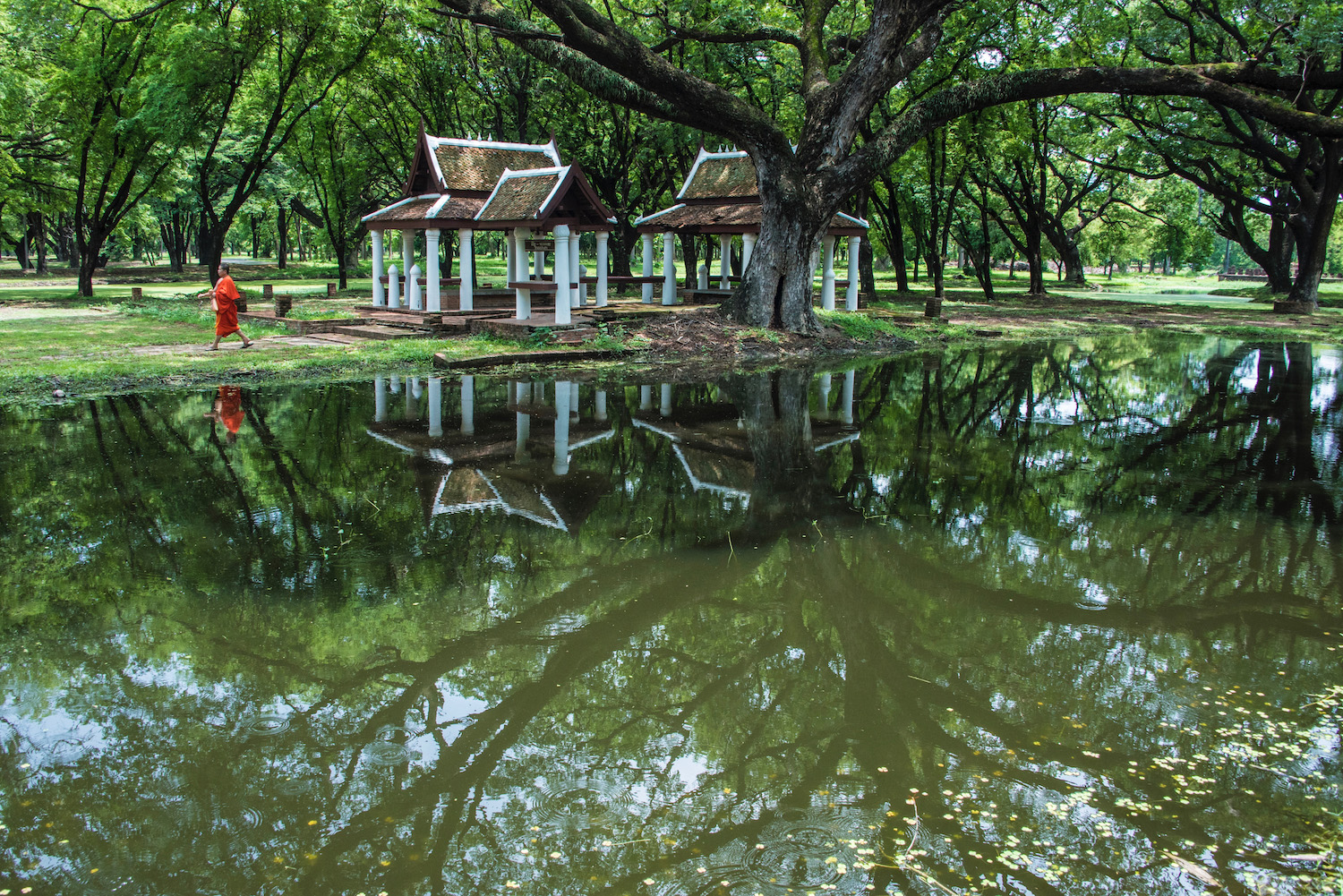
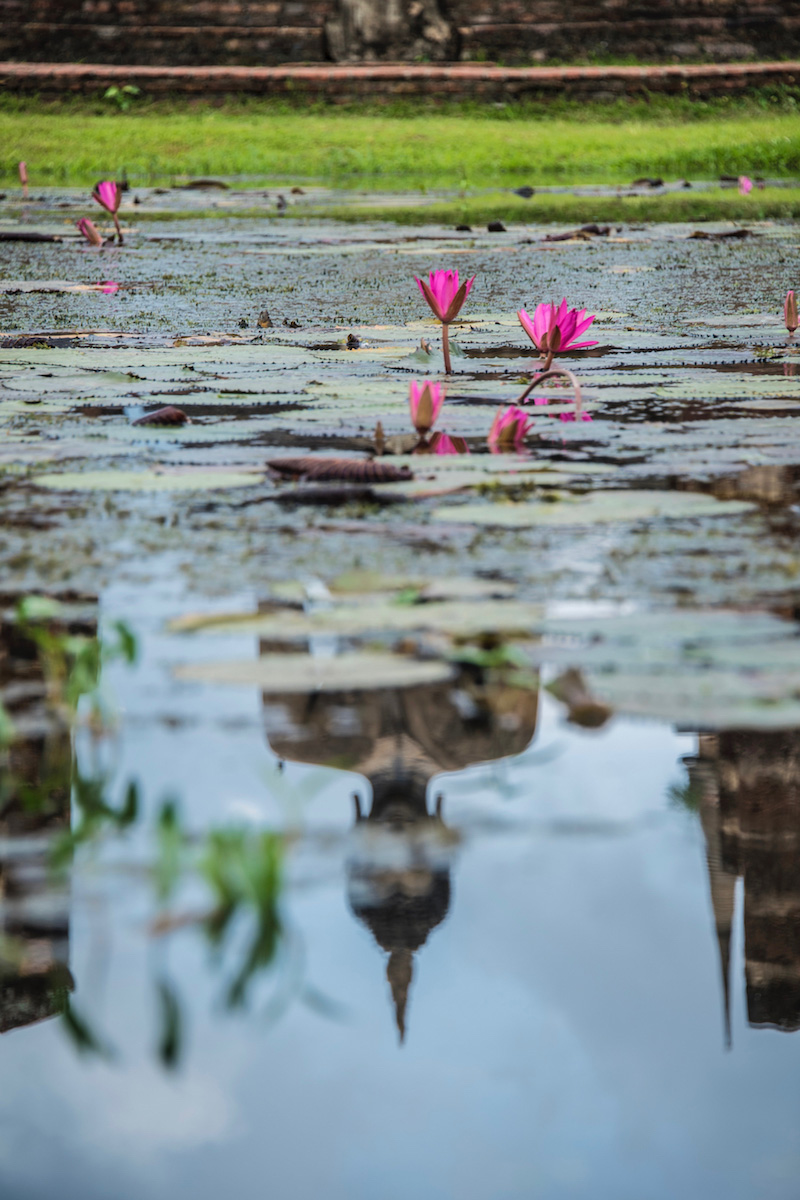

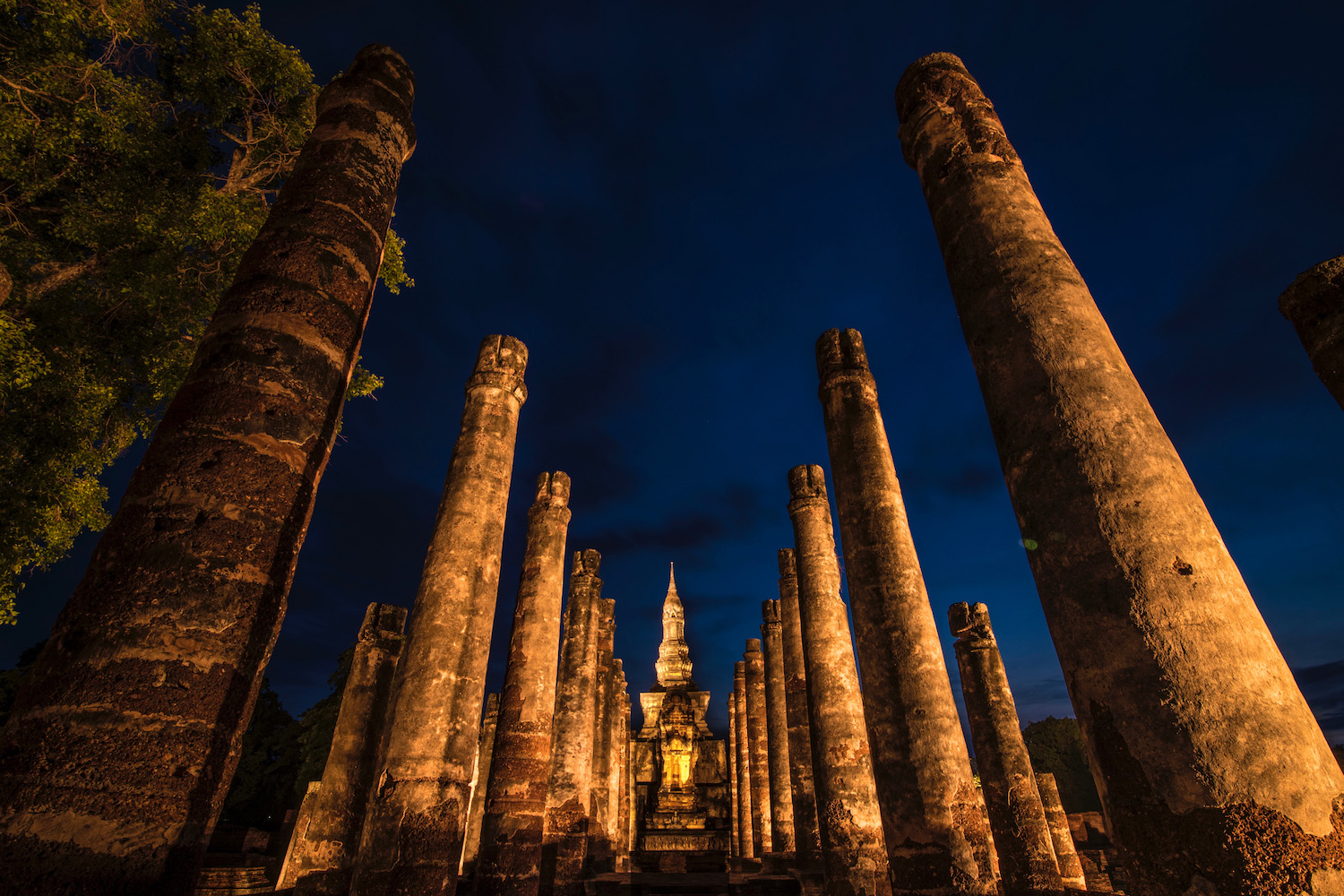
How Long Should You Spend in Sukhothai?
Ayutthaya sits within easy day-trip distance of Bangkok, but Sukhothai doesn’t have to be a long or difficult excursion. While I spent two nights in Sukhothai, I could easily have seen all the ruins (and tasty both the “wet” and “dry” versions of delicious Sukhothai noodles) without rushing, with just one night and parts of two days there.
The key in deciding how many days to spend in Sukhothai is two-fold. First, you need to decide whether you want to simply see the historical park (and peripheral temples, such as the magnificent Wat Sri Chum, which is home to one of the largest Buddhas I’ve ever seen), or venture outward into Ramkhamhaeng National Park, home among other treasures to Sai Rung Waterfall.
Secondly, you need to decide what want to leave with. If you simply want to have killer photos of otherworldly structures, 24 hours or so is plenty. If, on the other hand, you actually want to take the strange, sacred energy of this place with you, I’ve advise that you spend a second day, and focus it more on feeling than seeing.
How to Get to Sukhothai
If you search for “flights to Sukhothai,” the only results you find will be on the delightful (but overpriced) Bangkok Airways, the sole carrier that serves Sukhothai Airport. Instead, book a low-cost flight to Phitsanulok on either AirAsia or Nok Air, then take a shuttle (which you can book in advance with the airline, or upon arrival at Phitsanulok airport for 250 baht each way) to the old city of Sukhothai.
You can alternatively travel from Bangkok to Phitsanulok by train, or directly to Sukhothai by bus, although I would recommend against these options. The journeys are long, and while overnight trains in Thailand are more comfortable than buses, the arrival times of these trains are awkward and impractical, and they’re not much cheaper than flights.
Where to Stay in Sukhothai
I stayed at Baan B&B Sukhothai, which sits about 10 minutes southeast of Sukhothai Historical Park using the bike that’s free for guests to use. A small, intimate guesthouse operated by a local family, the B&B (whose name in Thai means “home”) manages to be bougey and backwoods at the same time.
Case in point: Torrential monsoon rains fell my second night in Sukhothai, as they’d done the morning my plane landed. Unfortunately, a lcoal frog decided to set up shop in a puddle that formed just outside the door of my bungalow, and croaked so loud (and so unyieldingly) that I couldn’t sleep more than a few hours.
Maybe this is what the flood dream and Facebook message were warning me about, I sighed as I laid there restless, wishing I were heartless enough to gig the motherfucker.

Robert Schrader is a travel writer and photographer who’s been roaming the world independently since 2005, writing for publications such as “CNNGo” and “Shanghaiist” along the way. His blog, Leave Your Daily Hell, provides a mix of travel advice, destination guides and personal essays covering the more esoteric aspects of life as a traveler.

